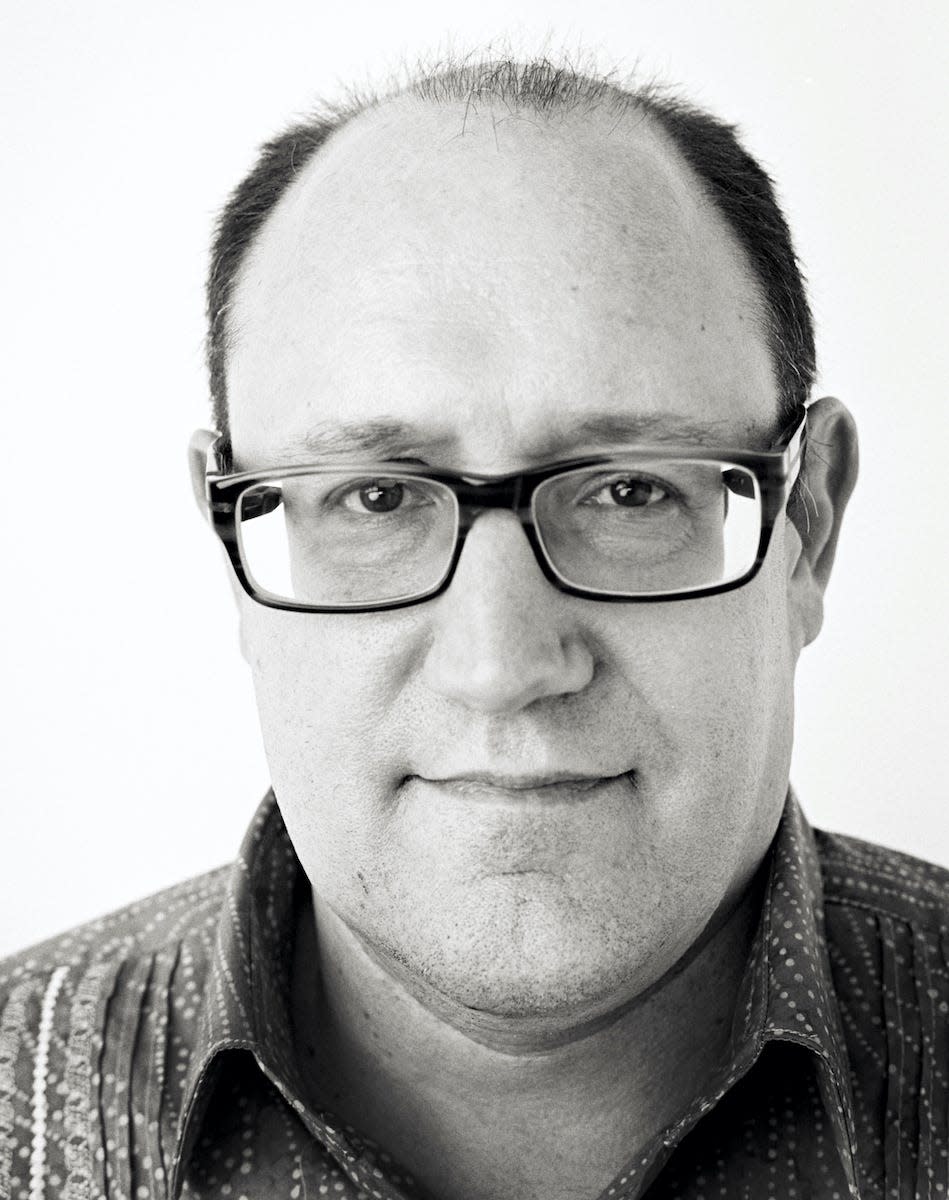What can a half-century bring? Caitlin Clark, for starters, and so much more
- Oops!Something went wrong.Please try again later.
James Naismith hung some peach baskets in an 1891 Springfield, Massachusetts, gymnasium and invented basketball. Not far away in 1926 Buffalo, New York, Charles Taylor patented an ice cream machine that dispensed soft serve.
Who knew those two innovations would swirl together through posterity into an in-demand Carver-Hawkeye Arena combination?
Once upon a time, Coach Lark Birdsong led the nascent University of Iowa women's basketball team to its first victory in 1974. Fifty years later, Hawkeye Caitlin Clark broke the women's NCAA scoring record. A lot can happen in half a century. It seems an unwise position to think one has everything calculated about the world, humanity, even oneself.
Resistance to life's dynamics and splendors curates a harsh, unconstructive orientation for one's existence. For what reason, except timidity masquerading as principle, should one be oppositional to upticks in human knowledge and understanding? Fifty revolutions around the sun — heck, one or two 29.5-day moon orbits around the Earth — put us in new iterations of world and self.
Just before the Birdsong-Clark arc began, Lawrence Kohlberg (1958) introduced his moral reasoning model (a cognitive development scale) and Philip Phenix (1964) articulated his realms of meaning (knowledge domains such as art, social science, and science.) During this '74-'24 period, Carol Gilligan (1982) added a care ethics (empathy) to Kohlberg's template; and the concept of emotional intelligence (1985) enhanced the concept of IQ. In biology (1992), the "second brain" — the human (gut) microbiome — was introduced. In American studies, the framings of the new “first world war” (The Seven Years War), the second war for independence (War of 1812), and the Haudenosaunee Great Law of Peace (as an informant of the U.S. Constitution) were solidified. We learned (2011) Earth had two moons but one "splatted" into the other, merging astronomically. In art, the oldest painting (in Sulawesi, Indonesia) was discovered in 2017. And only recently were we able to map the DNA Homo sapiens (that's us) gained from Neanderthal and Denisovan interbreeding.
Closer to home, in this 50-year wonder, we've explored the benefits and challenges of variable seed planting and gathering crops employing a harvest moisture calculator.
Also, in this time, the lenses of multiple intelligences (1983); a plethora of learning (1984) and teaching styles (1996); and neurodiversity (1998) truly entered our consciousness.
As new understandings and perspectives keep bubbling forth, to say we have the world and humanity clearly mapped are claims that breach credulity.
We have had inklings of neuroplasticity for quite some time while we have ridden an assistive cognitive technology explosion since only some 1988 legislative coaxing. And now we literally, when we're not posting vapid comments of dubious insight on social media, have the entirety of human knowledge in the palm of our hands. Regardless our biology or anatomy — with learning, learning technology, and experiences — we can write new and improved micro-stories about ourselves every day while we can embark on novel and enriched micro-journeys every 24 hours.
Anyone who in this moment asserts they are preordained and immutable, or have their current and future selves figured out, ought to open their life's book with temerity to imagine what the blank pages could say.
The phenomenal happenings and insights in this chronological window, est. 1974, are many and would consume this whole newspaper to annunciate. And, yet, any 50-year wander in human existence would make, to some extent, the same marvelous case. One certain thing we can know about ourselves right now is this: only adjectives like curious, creative, conversational, interactive, growing, malleable, and multifarious are apt enough to describe us, accurate enough to accommodate us.

Patrick Muller is a visual artist living in Hills.
This article originally appeared on Des Moines Register: Caitlin Clark, and so much more, emerge from a wondrous half-century

